Guitar World Verdict
If your little one is seeking that iconic tone, look and feel only a Les Paul or SG can deliver, then the new Epiphone Power Players are definitely worth it. We certainly had a lot of fun playing them.
Pros
- +
Quality tones from a budget-friendly platform.
- +
Manageable scales for younger players.
- +
Cool finishes.
- +
Playable.
Cons
- -
Tough competition from cheaper guitars such as the Squier Mini Jazzmaster.
You can trust Guitar World
If there’s one thing we can be sure of it’s that your first electric guitar has a monumental impact on you as a player. Put the right guitar into the hands of a child and their playing career will be accelerated, sending them speeding down the road to rock stardom, whereas an ill-fitting axe will put the brakes on their progress entirely.
Clearly, Epiphone agrees, as the company has created an entire collection of guitars specially designed as a gateway for budding guitarists – the Epiphone Power Players. Like something out of a Rick Moranis-led ’80s flick, Epiphone has pointed its shrink-ray at its most famous instruments, turning them into short-scale shred machines that are sure to fit even the smallest of hands.
This isn’t Epiphone’s first venture into the world of miniature electric guitars – far from it. Some of you may remember the admittedly slightly unloved Les Paul Express, which sat in the depths of the brand’s range for quite some time.
Now, the Express wasn’t a bad guitar. It’s just that the nuts-and-bolts approach to a kid-friendly guitar was a little uninspiring – we can’t imagine that it lit a fire in the belly of many young players. Contrast that with an eye-catching design, bright colours and focus on playability, and it’s clear that the new Power Players Les Paul and SG breathe new life into the concept of a beginner’s guitar.
Sporting a 3/4+ length scale – or 22.73”, to be exact – as well as a Slim Taper D neck profile, a sculpted heel for improved upper fret access, and a set of 650R/700T humbuckers, these little guitars have an impressive spec list.
As you’d expect, with these dinky guitars being aimed squarely at newbies, they come with a plethora of accoutrements, such as an Epiphone branded gigbag, guitar strap and plectrums, plus a basic guitar cable – all you need to do is supply the amplification. Read on and we’ll take a close look at both guitars.
Epiphone Power Players SG
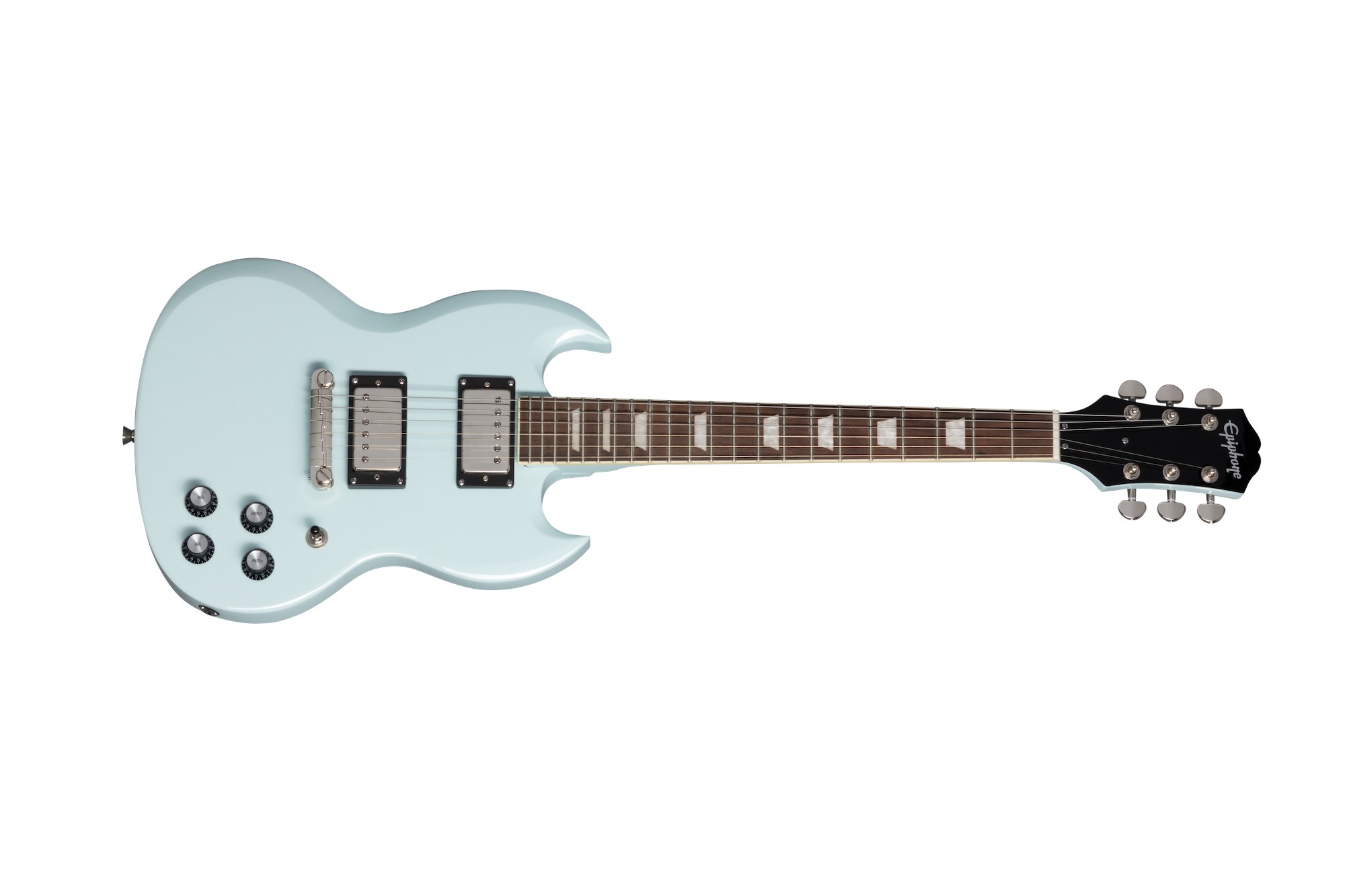
Okay, before we take a deep dive into this guitar, we need to get the obvious stuff out of the way first. This guitar is built with a very specific player in mind, and frankly, we aren’t it. This guitar was designed for the youngest of players, putting us a comfortable two feet taller than the intended audience.
All the latest guitar news, interviews, lessons, reviews, deals and more, direct to your inbox!
So with that in mind, we won’t judge this devil-horned six-string on whether or not it will replace our beloved SG Standard, but instead, we aim to find out whether it fulfils the brief it has set out for itself – is it a good first guitar?
Now, the Power Players SG is up against some pretty stiff competition in this rather crowded end of the market. Fender, Jackson and Ibanez all offer well-received mini shredders, and unfortunately for Epiphone, they are all more affordable – though granted, they don’t all come with extra accessories. That said, Epiphone might just win when it comes to playability, and the retro charm of this classic design most definitely stole our hearts.
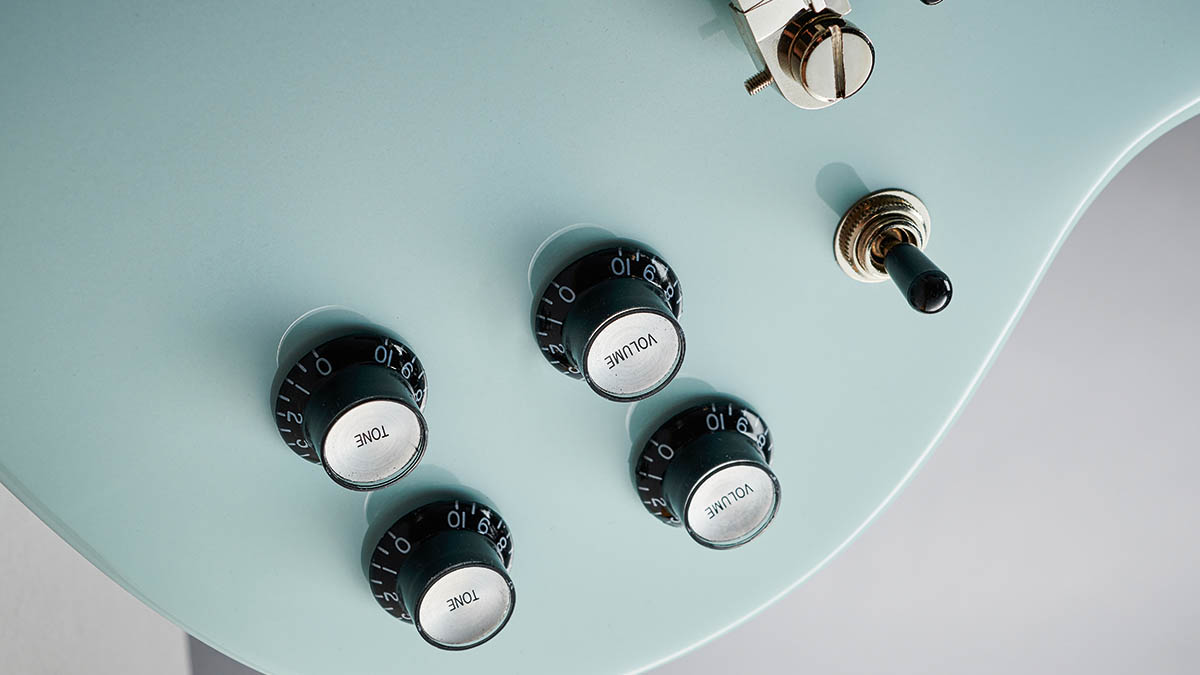
Despite its size, this guitar doesn’t feel cramped at all – even for a grown-up’s hands. Sitting with this SG was surprisingly natural and the fret spacing didn’t mess with our muscle memory too much. The D profile neck is nicely rounded, with a smooth finish, and we can see it being a hit with rookie players. It’s easy to play for hours and hours without placing too much strain on young fingers.
At the heart of this colourful SG is a set of Epiphone branded humbuckers – more specifically, the 650R and 700T. These no-frills pickups deliver the exact sound you expect to hear from this devilishly pointy axe, with the tone being equal parts warm and present, and you’ll be glad to know there’s just the right amount of output to get things cooking.
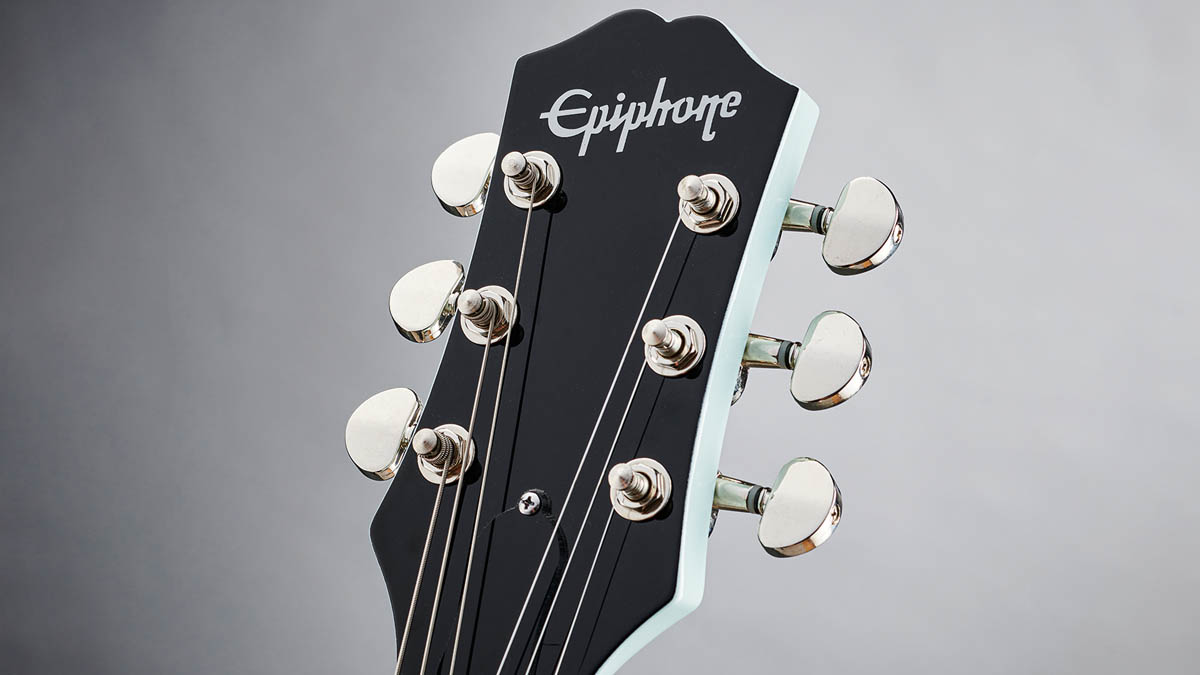
We need to give a quick shout out to the overall aesthetic of the Power Players range and, in particular the SG. It’s our belief that Epiphone is trying to make the – sometimes – stuffy world of legacy guitars fun and exciting for new players, and we fully endorse this bold look.
All three colour options – Lava Red, Dark Matter Ebony and Ice Blue – hit the mark for us. Our review example was finished in the snowy Ice Blue, and while it may look more at home on a guitar of Californian persuasion, we think the handsome curves of the SG wear it well.
In fact, Gibson, if you are reading this: hurry up and make the SG Standard available in this finish for us older kids!
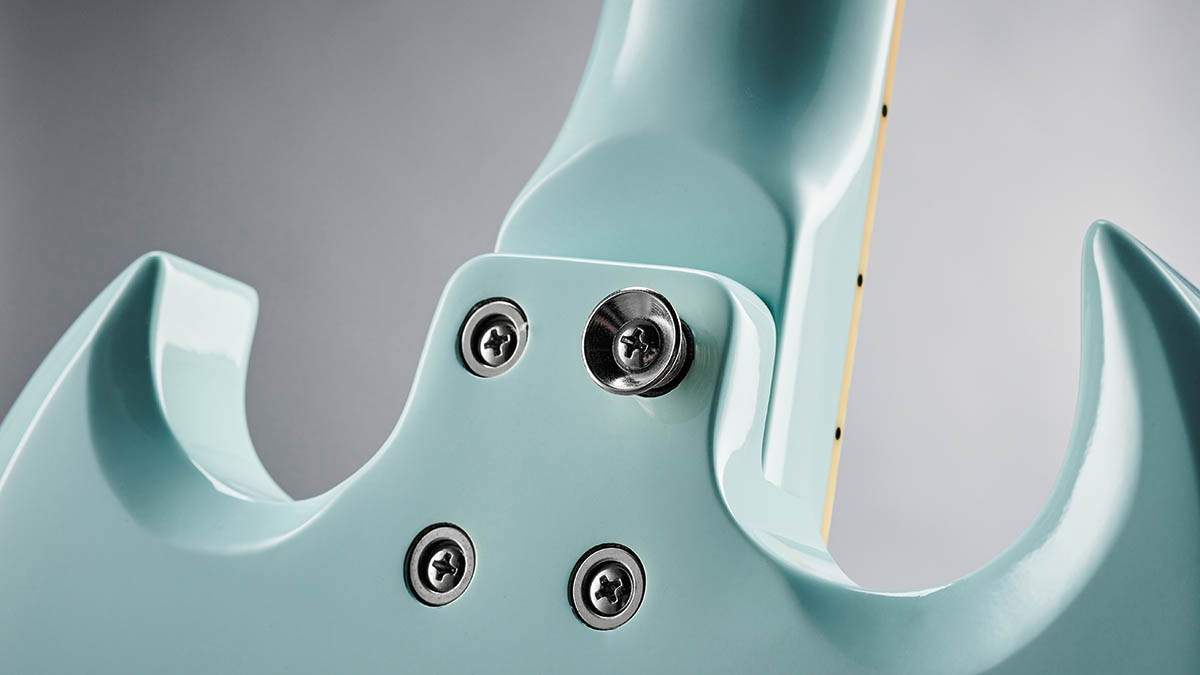
Epiphone Power Players Les Paul
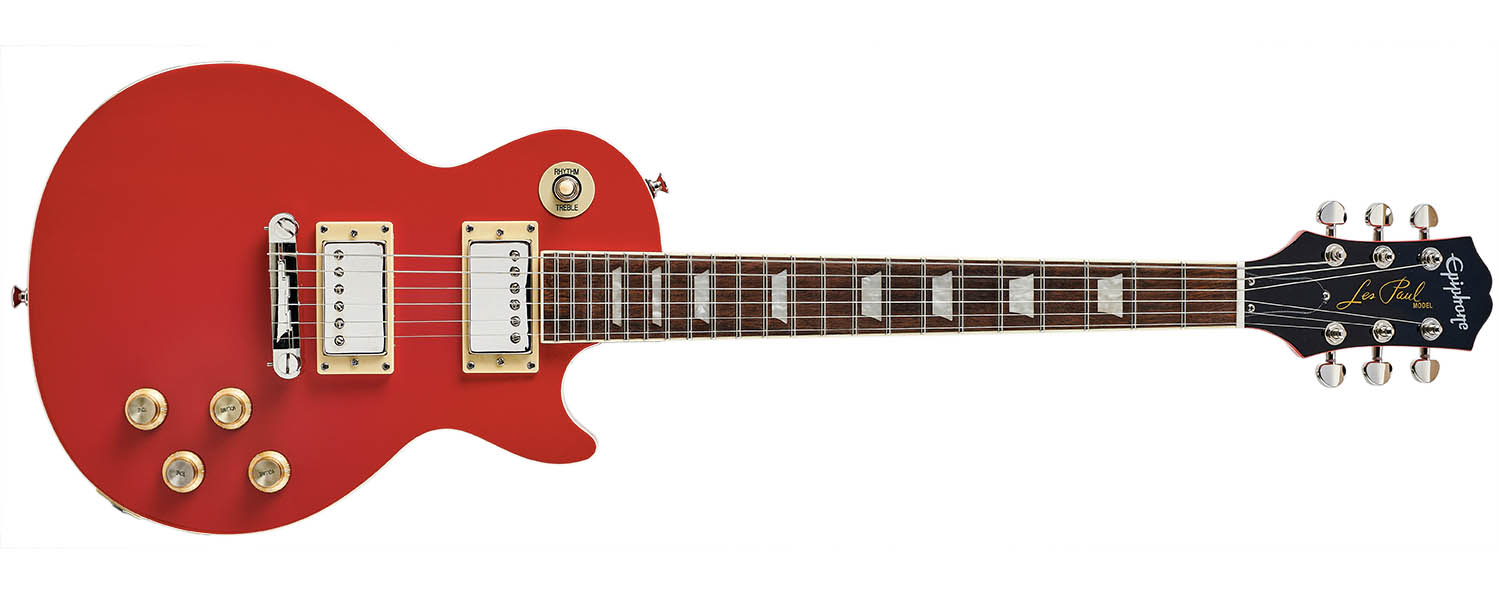
Now we turn our attention to the SG’s vainglorious big brother, the Les Paul. The Power Players Les Paul shares the same specs and aesthetic and is even available in the same choice of colours – our review example just so happened to be in the sizzling Lava Red finish.
Keeping the scale the same at 22.73”, the Les Paul is just as comfortable as its pointier counterpart and just as easy to play. In fact, it might even be more comfortable. The single-cut option seems to be better balanced overall, especially when seated. Now, that’s not all that surprising, as this is a fairly common observation when comparing the Les Paul to the SG – we just didn’t expect it to be quite so noticeable on the mini version.
Of course, the neck sports the same D profile as before, but where it gets more interesting is in the sculpted heel. While both guitars feature this design, it’s way more useful on the Les Paul iteration.

By the very nature of the single-cut design, the fret access just isn’t as good as the SG, and while it doesn’t solve the issue completely, the recessed heel join does go a long way to making playing up at the dusty end more comfortable.
Tonally, there isn’t much in it, between these guitars. And, yes, you guessed it, the Les Paul features the same 650R and 700T pickup set, as well as the two volume, two tone layout you’d expect from the LP. The overall sound of the Power Players Les Paul is rich, warm and much bigger than the body would have you believe. We actually found ourselves favouring the tone of the neck pickup on a clean Twin-style setting with plenty of reverb.
For us, this little LP really came into its own in this scenario, delivering a dynamic sound that some larger – and more expensive – guitars would be jealous of.
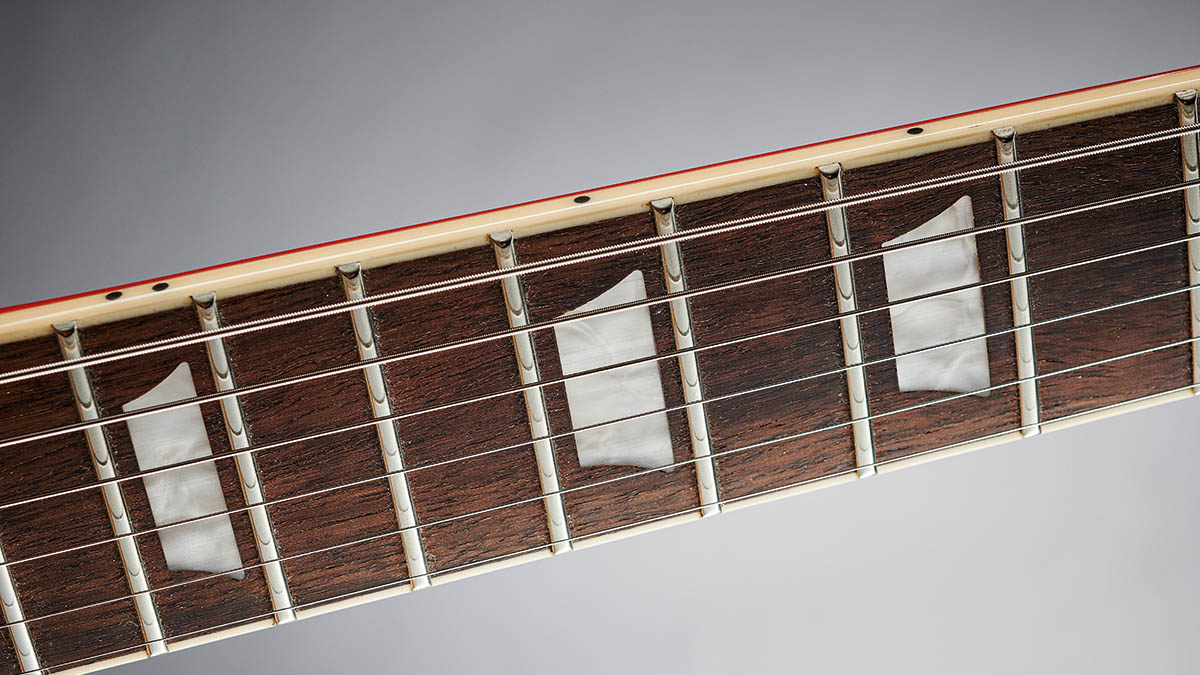
Verdict
This question really has two answers. The short answer is ‘yes’, with an ‘if’, the long answer is ‘no’, with a ‘but’. In truth, we really enjoyed Epiphone’s new venture into short-scale, kid-friendly guitars.
These are a mammoth step up when compared to Epiphone’s previous mini offering and they will most definitely inspire legions of wannabe rockstars, for sure. Both of these instruments offer a new look for Epiphone, while the stellar playability and superb sound prove they aren’t just style over substance, but the price can’t be overlooked.
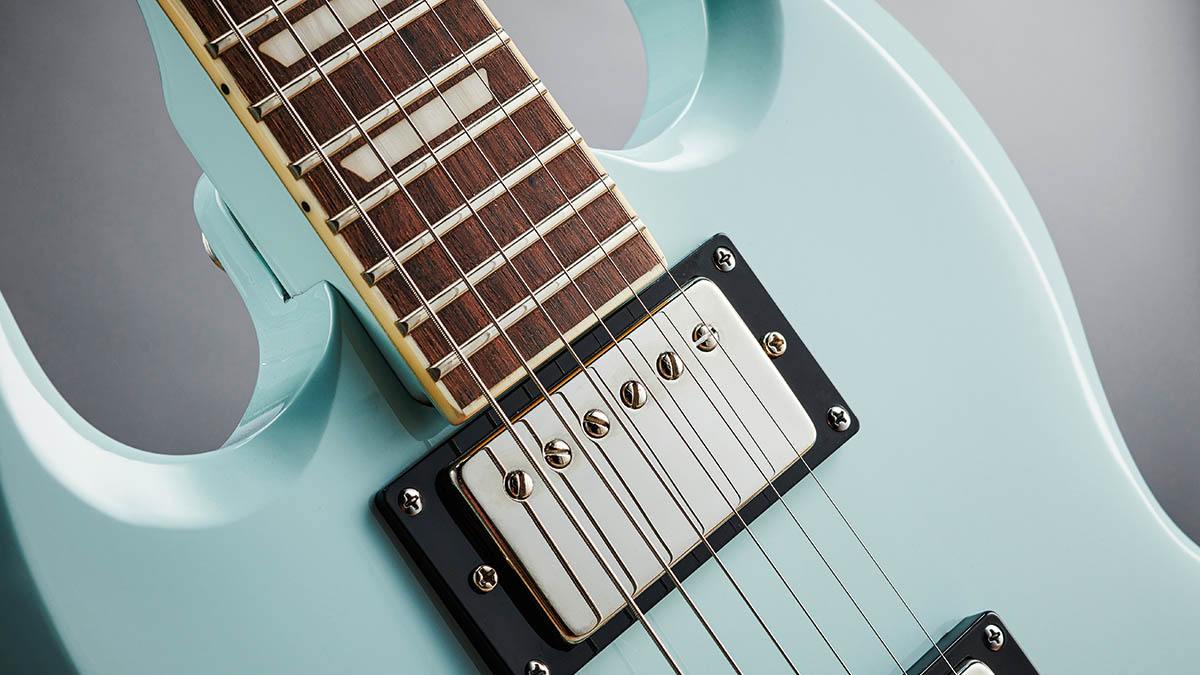
Coming in at just shy of $279, these guitars are around $100 more expensive than the Squier Mini Jazzmaster, which is also a dual humbucker-loaded, miniature six-string in a pastel finish. You don’t get the added extras such as a gigbag, picks, or cable, but with the cost of everything going up, it’s hard not to see the Squier as a pretty sweet deal.
That said, we can’t deny that some players are just more drawn to the classic appearance – and sound – of the Les Paul or SG, and in that case, these are by far and away the best options out there for young players looking to kick start their playing career with a classic axe hanging off their shoulder.
Specs
Epiphone Power Players SG
- PRICE: $279 / £249
- BODY & NECK: Mahogany
- NECK PROFILE: SlimTaper D
- SCALE LENGTH: 577.34 mm / 22.73”
- FINGERBOARD: Indian Laurel
- FRETS: 22, Medium Jumbo Bridge, Lightning Bar Compensated Wrap Around
- PICKUPS: Epiphone 650R/700T Humbuckers
- CONTROLS: 2x Volume, 2x Tone
- FINISH: Ice Blue (reviewed), Dark Matter Ebony, Lava Red
Epiphone Power Players Les Paul
- PRICE: $279 / £249
- BODY & NECK: Mahogany
- NECK PROFILE: SlimTaper D
- SCALE LENGTH: 577.34 mm / 22.73”
- FINGERBOARD: Indian Laurel
- FRETS: 22, Medium Jumbo Bridge, Lightning Bar Compensated Wrap Around
- PICKUPS: Epiphone 650R/700T Humbuckers
- CONTROLS: 2x Volume, 2x Tone
- FINISH: Lava Red (reviewed), Ice Blue, Dark Matter Ebony
- CONTACT: Epiphone
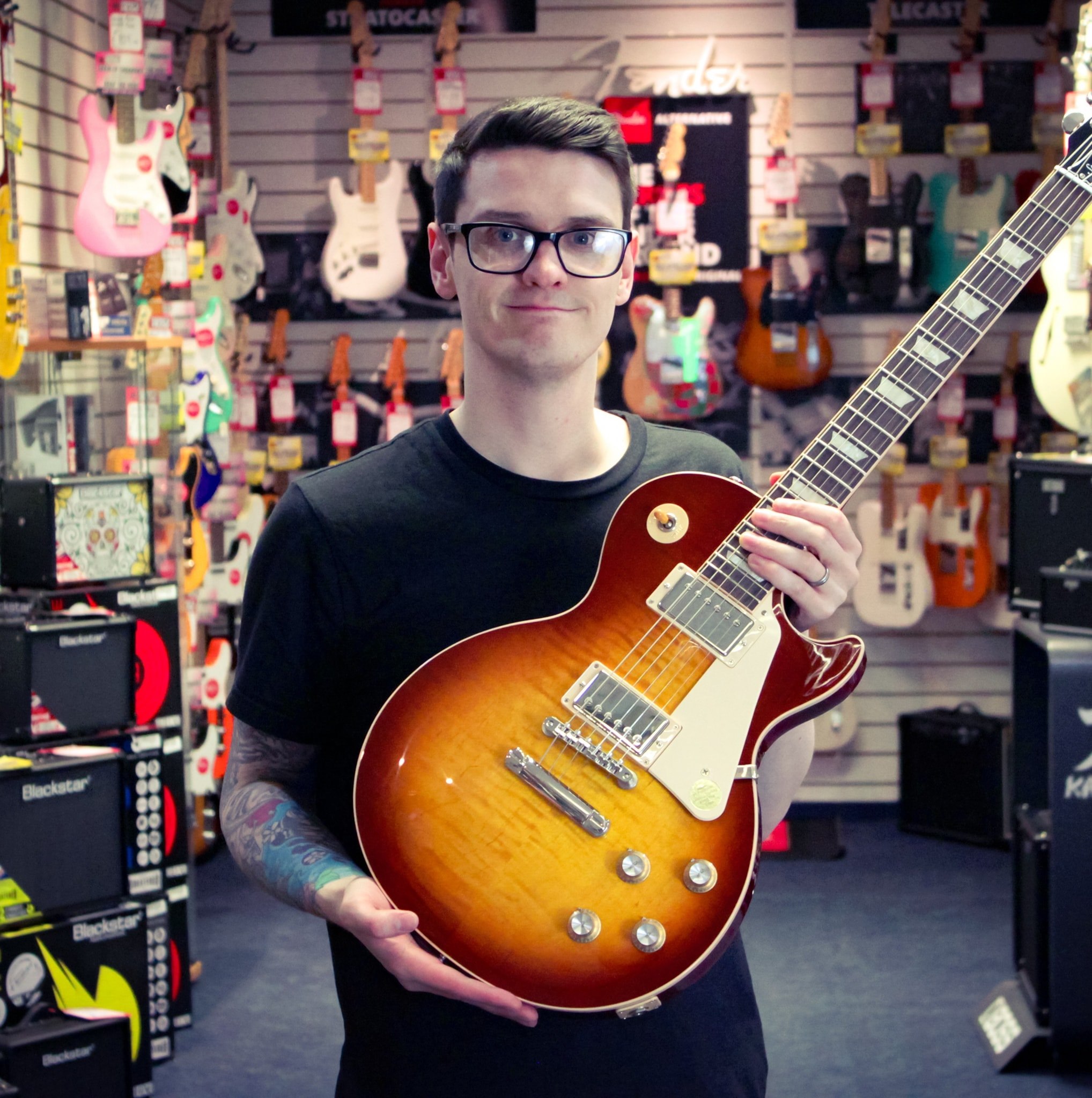
Daryl is a Senior Deals Writer at Guitar World, where he creates and maintains our 200+ buyer's guides, finds the best deals on guitar products, and tests the latest gear. His reviews have been featured in prominent publications like Total Guitar, Guitarist, Future Music magazine, and MusicRadar.com.
During his career, he has been lucky enough to talk to many of his musical heroes, having interviewed Slash and members of Sum 41, Foo Fighters, The Offspring, Thrice, and more. In a past life, Daryl worked in music retail. For a little under a decade, he advised everyone from absolute beginners to seasoned pros on the right gear for their needs.
Daryl is a fully qualified sound engineer, holding a first-class Bachelor's degree in Creative Sound Production from the University of Abertay.

